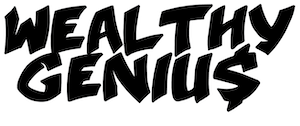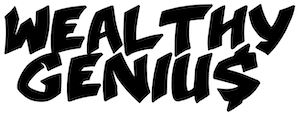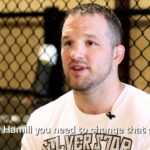About Morihei Ueshiba
Morihei Ueshiba (植芝 盛平), also known as Ueshiba Morihei, was a Japanese martial artist and the creator of the martial art of aikido. His estimated net worth was $1 million. He died on April 26, 1969. Ueshiba is frequently referred to as “the founder” or “Great Teacher” Kaiso or sensei.
It is impossible to describe Morihei Ueshiba without mentioning the martial art form he created, aikido. Ueshiba changed over time from what many have described as a very robust and powerful man to one who was less bulky. He continued to evolve his work as his might waned to match his new set of abilities. Furthermore, spiritual or internal transformations had a significant impact on the art he practiced. And gradually, compared to other throwing techniques, Ueshiba’s approach became noted for being more circular and spiritual.
Date of Birth: Morihei Ueshiba was born in Tanabe, Wakayama Prefecture, Japan on December 14, 1883. He was the youngest of Yoroku and Yuki Ueshiba’s five children.
Due to his efforts and distinctive technique, Ueshiba is still regarded as a legend in the martial arts. This is his tale.
Upbringing
Ueshiba was relatively illly as a child, as is the case with many notable martial artists (see Helio Gracie and Gichin Funakoshi). He wasn’t known as a physically intimidating child, but rather as an intelligent one (though that would change in the future).
Ueshiba had a fortunate upbringing in several ways as well. His father was wealthy and a landowner who dealt in fishing and logging. His father was similarly politically engaged to the extent that supporters of another candidate even attacked him in front of Ueshiba. This, along with his father’s tales about Ueshiba’s great grandpa, who was previously renowned to be a formidable warrior, perhaps persuaded the future creator of aikido to pursue a career in martial arts.
Early instruction in martial arts
Early martial arts instruction for Ueshiba can be described as patchy. Records show that he only briefly studied Tenjin Shin’y-ry jujutsu with Tozawa Tokusabur in Tokyo in 1901. More significantly, from 1903 to 1908 in Sakai, he studied Got-ha Yagy Shingan-ry under Nakai Masakatsu, though even that was sporadic because of his active military duty at the time. In addition to all of this, Ueshiba trained in judo in Tanabe under Kiyoichi Takagi in 1911.
But after relocating to the island of Hokkaid with his wife in 1912 as part of a settlement push, his true martial arts identity emerged. He started learning Dait-ry aiki-jjutsu there from its reviver Takeda Sokaku. As a result, he focused a lot of his practice on the techniques of throws, joint locks, and strikes to the body’s critical organs, or Dairo-ryu aiki-jujutsu. However, from what Ueshiba has said, he gained much more knowledge from Sokaku.
“I visited various locations in search of the genuine budo. Then, around the age of 30, I relocated to Hokkaido. On one occasion, I encountered a certain Sokaku Takeda Sensei of the Aizu clan while staying at the Hisada Inn in Engaru, Kitami Province. He instructed in Daito-ryu jujutsu. He taught me for 30 days, and throughout that time I experienced a sort of inspiration. Later, I had this teacher over to my house and, together with 15 or 16, became a pupil looking for the essence of budo.
When it came down to it, Ueshiba said that “Takeda Sensei opened my eyes to budo,” which he could not find in the other arts he had studied as much of.
Aikido Dait-ry jujutsu instruction
Regarding the origins of every kind of martial arts practiced today, there are arguments and more arguments. Undoubtedly, there are several concerning Ueshiba as well. However, he apparently acquired a number of the scrolls proving his training under Takeda. The Hiden Mokuroko, Hiden Ogi, and Goshin’yo te were among them. In 1922, Takeda also granted Ueshiba his kyoju dairi certificate, or teaching license, for the method. It has also been reported that Ueshiba acquired a sword transmission scroll for the Kashima Shinden Jikishinkage-ry from his mentor that same year. From then, he assisted Takeda in teaching the Dait-ry system as a teaching assistant.
Aikido comes after Daito-ryu
Jujutsu forms as a whole tended to be more linear and had a foundation in strength, which the formerly ill Ueshiba gained a lot of as he aged. In his early lessons, he remained true to his Daito ryu roots. However, as time passed and he started to lose some of his strength, he started to focus more on defensive techniques like throws and circular movements rather than attacks meant to harm or kill. Naturally, he continued to adhere to the principle of using an opponent’s strength against them, a cornerstone of any genuine grappling or throwing art.
In truth, one can still trace the more linear course of what they were taught by Ueshiba in some of his more well-known early students, such as Kenji Tomiki (who eventually created Shodokan Aikido or Tomiki-ryu).
Ueshiba changed the name of the martial arts style he taught as he veered away from aggressiveness and strength-based martial arts. Along with this, he frequently altered the name of the martial art he taught, going from aiki-jjutsu to Ueshiba-ry to Asahi-ry to aiki bud to aikido.
Spiritual Constraints
The modifications Ueshiba made to his paintings may have been influenced by spiritual impulses more than anything else, if not more so. The man who would later create aikido discovered Onisaburo Deguchi, the spiritual head of the moto-ky cult in Ayabe, after departing from Hokkaid. In addition to influencing Ueshiba’s outlook on life, Deguchi was able to connect him with influential political figures, which subsequently affected his capacity to use his work to change the world.
Ueshiba attributed the development of his work to a variety of events, in line with his spiritual enlightenment. Which were:
- According to legend, in 1925, Ueshiba used a wooden katana called a bokken to slash down an arrogant navy officer without harming him. He then proceeded to his garden where he had a significant “…” I experienced a sudden trembling of the cosmos as a golden spirit rose from the earth, cloaked my body, and transformed it into a golden one. My physique lightened at the same time. I was able to hear the birds’ whispers and was able to clearly understand the thoughts of God, the universe’s creator.
I suddenly realized that God’s love, which is the spirit of tender protection for all beings, is the source of budo.
Budo does not involve using force to subdue an opponent, nor does it involve using weapons to bring about the end of the world. True Budo entails accepting the spirit of the cosmos, maintaining world peace, and properly reproducing, safeguarding, and cultivating all living things.
- His second encounter occurred in 1940 when, according to him, “At around two in the morning, while I was doing misogi, I abruptly forgot all the martial arts I had ever learned. My teachers’ methods seemed to be brand-new. They were no longer weapons to throw people with; instead, they were tools for cultivating life, knowledge, and morality.
- Ueshiba had a vision of the “Great Spirit of Peace” in 1942, during some of the most difficult times of World War II, and he said that “The Way of the Warrior has been misunderstood.” It is not a way of destroying and killing people. People who try to outdo one another in competition are doing it wrong. The worst thing a person can do is to smash, hurt, or destroy. Preventing such killing is the true path of a warrior; it is the art of peace and the force of love.
Initial Dojo
Ueshiba established his first dojo in Tokyo in 1927. The Aikikai Hombu Dojo is the current name of the dojo.
Death
On April 26, 1969, Ueshiba passed away abruptly from cancer. Two months after his death, his wife Hatsu (; Ueshiba Hatsu, née Itokawa Hatsu; 1881-1969) also passed away, as is sometimes the case with people who are close to us.
Morihei Ueshiba had a $1 million net worth at the time of his passing in 1969.
Famous Quotes:
Ueshiba was a highly intelligent man who taughts us all more than just martial arts. Along with this, here are a few of his most famous quotes, as indicated by BrainyQuote.com.
Failure is the key to success; each mistake teaches us something.
One does not need buildings, money, power, or status to practice the Art of Peace. Heaven is right where you are standing, and that is the place to train.
Life is growth. If we stop growing, technically and spiritually, we are as good as dead.
Each and every master, regardless of the era or the place, heard the call and attained harmony with heaven and earth. There are many paths leading to the top of Mount Fuji, but there is only one summit – love.
The art of Peace I practice has room for each of the world’s eight million gods, and I cooperate with them all. The God of Peace is very great and enjoins all that is divine and enlightened in every land.



